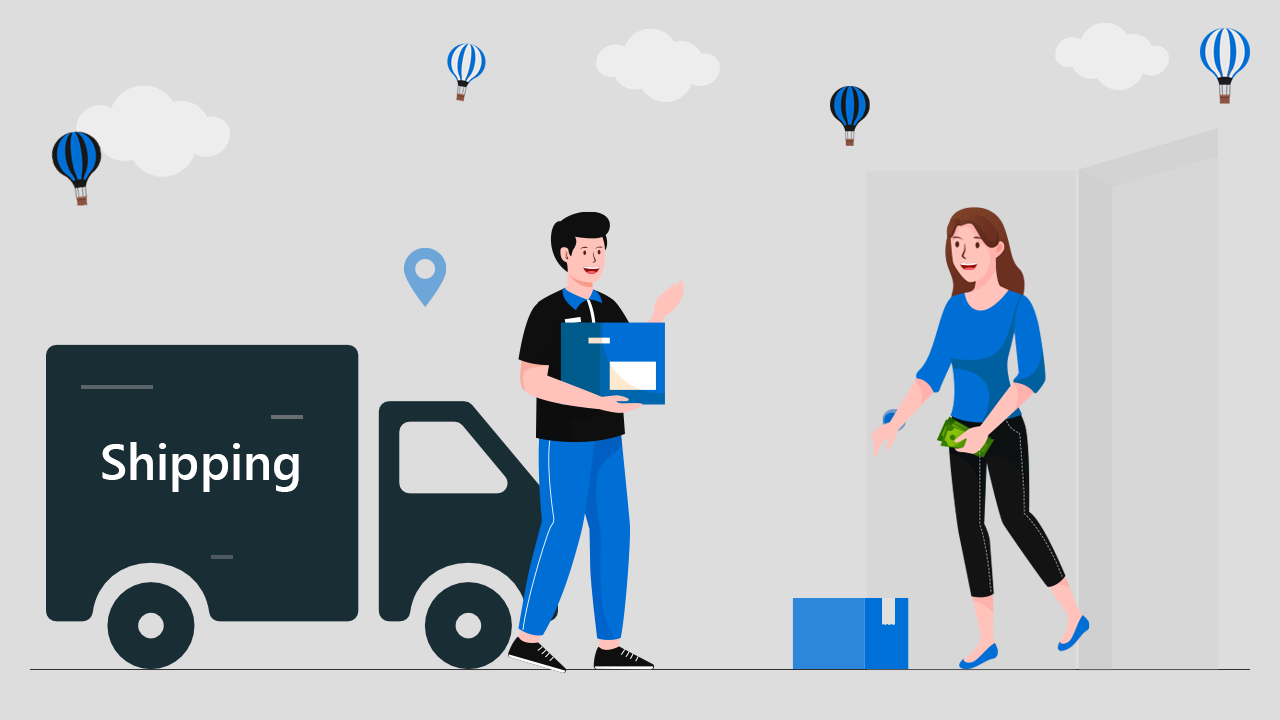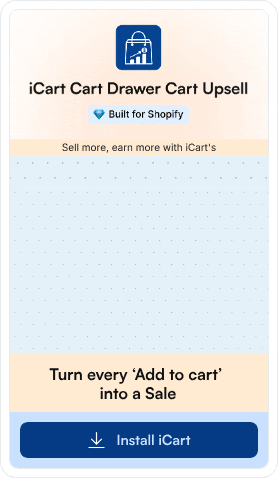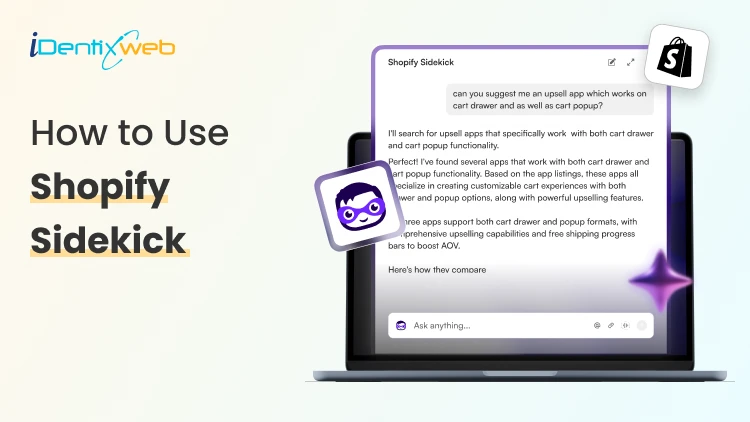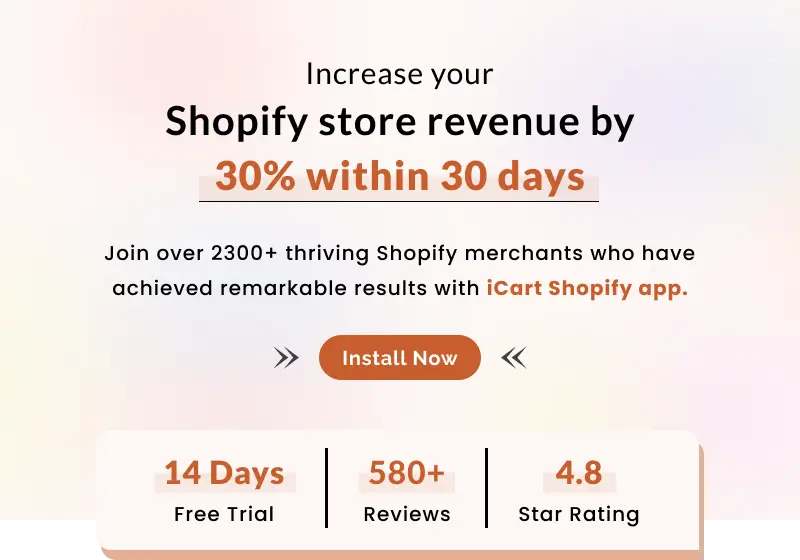
Explore the beginner-friendly approach of dropshipping if you’re venturing into e-commerce and seeking a hassle-free order fulfillment method. Dropshipping has become increasingly popular in online money-making, making it an ideal choice for newcomers entering the world of e-commerce. This method has revolutionized the eCommerce landscape. It enables countless entrepreneurs to establish profitable ventures with minimal upfront costs. If you're on a tight budget but dreaming of launching a new business, dropshipping could be the perfect solution.
Whether you're a beginner or a seasoned entrepreneur, exploring the world of dropshipping is a smart move. Dive into our beginner's guide to dropshipping and discover valuable tips to kickstart your journey. This dropshipping tutorial will guide you on how to start dropshipping step by step as a beginner, providing insights without overwhelming you with unnecessary complexities.
What is Dropshipping?
Dropshipping is a business in which the store owner doesn't have to keep the stock of products. Instead, they need to buy inventory from a wholesaler based on customer order requirements. The main difference between dropshipping and the standard retail model is that the seller does not have or own stock. Instead, the seller acquires inventory from a third party — typically a wholesaler or manufacturer — as needed to fulfill orders.
Is Dropshipping Still Profitable in 2025?
Dropshipping can be extremely profitable for those who take the time to do their research and prepare for success. It’s not a get-rich-quick scheme, but with dedication and hard work, dropshipping can definitely make you rich!
One of the key reasons why dropshipping is bad for some businesses is the fierce competition. Many customers expect free shipping and returns, which can quickly eat into your profits. Additionally, depending on third-party suppliers can lead to poor product quality or delayed shipments, affecting customer satisfaction.
Pros of Dropshipping
Easy to Start
Because of low overhead, all you need is a website and a payment processor, and you can start selling. You don’t need to worry about many things like managing warehouse, package, and shipping, inventory tracking, inbound shipments, managing stock level, etc.
Low Barrier to Entry
With dropshipping, you don't have to worry about warehouse management or payments. You also don’t have to purchase inventory in bulk, which takes up valuable cash and can leave you with unsold stock.
Low Overhead
You don’t have to purchase the inventory. This makes it very easy for a small business to start selling products online without having to invest thousands in inventory upfront.
Flexibility
Dropshipping gives you the ability to test new product ideas without making a large investment upfront or adding additional workload. You can also quickly adapt to changes in customer demand by adding or removing items from your product line as needed.
Scalability
Dropshipping allows you to scale your business almost without limit since there is no direct relation between inventory and sales volume. This makes it easier to forecast sales and profits since you will know all of your fixed costs up front.
Cons of Dropshipping
Low Profit Margins
Due to the numerous middlemen involved in the dropshipping process, product costs tend to be higher than if you were to order wholesale from the manufacturer or distributor. You must account for your costs when setting retail prices, which can negatively affect your profit margins.
Competition
You may have to compete with other sellers. Because dropshipping is so easy to start, there are a lot of people doing it. If there are not, in some cases that might not get any issues. There are likely many people dropshipping the same products as you. As a result, pricing may be competitive, and you may have to fight for your share of customers.
No Control Over Shipping
The biggest problem with dropshipping is that the supplier is doing the fulfillment for you, and that can lead to major problems. Since you don’t have direct communication with the supplier you won’t be able to gauge shipping times and quality. This can cause customer service problems if items arrive late or in poor condition.
Less Control Over the Customer Experience
When you don’t fulfill orders yourself, you lose some control over the customer experience. It could be packing materials and shipping speed. The best way to deal with this is by choosing suppliers that offer fast delivery times and high-quality products and packaging so that, even if something goes wrong, customers won’t blame you for it.
How Do I Start a Dropshipping Business Step-by-Step
- Starting a dropshipping business isn’t difficult. But there are several steps you’ll need to follow to get started.
- Find a product or niche that interests you so you can become an expert in your chosen industry.
- Identify potential suppliers and find out whether they dropship. If not, ask whether they can recommend someone who does.
- Choose the supplier from which you’ll buy your products.
- Build an eCommerce website or create your store on an eCommerce platform such as Amazon, Etsy, Shopify, or eBay. Don’t forget to develop a strong Social Media Strategy for Ecommerce Website to drive traffic, engage customers, and boost sales for your store.
How to Find a Dropship Supplier?
Search on Internet
Utilize search engines like Google to find potential dropshipping suppliers. Look for keywords like "dropshipping suppliers" or "dropship wholesalers" to discover companies that offer dropshipping services. For example, searching "women's clothing dropshipping suppliers" can lead you to specific suppliers in that niche.
Talk to your current suppliers
Reach out to your existing suppliers and inquire if they offer dropshipping services. Many traditional wholesalers are now adapting to the dropshipping model to cater to the evolving needs of e-commerce businesses. For instance, if you have been sourcing electronics from a supplier, ask if they also provide dropshipping services for their products.
Search B2B marketplaces
Explore business-to-business (B2B) marketplaces like Alibaba, Global Sources, or Wholesale Central. These platforms connect retailers with manufacturers and wholesalers offering dropshipping services. For example, Alibaba's dropshipping section allows you to filter suppliers based on their dropshipping capabilities.
Ask around in Facebook groups
Engage with niche-specific Facebook groups related to your industry or product category. Members often share their experiences and recommendations for reliable dropshipping suppliers. For instance, if you're interested in pet products, join pet owner communities where members may recommend trustworthy pet product suppliers who offer dropshipping services.
Attend trade shows
Attend industry trade shows and exhibitions to network with potential dropshipping suppliers. These events provide opportunities to meet suppliers in person, discuss business partnerships, and negotiate terms. Consider using a free digital business card maker to create professional business cards for networking at these events. For example, attending a fashion trade show can allow you to connect with clothing manufacturers willing to dropship their products.
Check out directories of drop shippers
Explore online directories specifically curated for dropshipping suppliers, such as SaleHoo or Worldwide Brands. These directories provide lists of pre-vetted suppliers offering dropshipping services across various product categories. For example, SaleHoo's directory includes suppliers verified for reliability and product quality, making it easier to find suitable partners for dropshipping.
Conclusion
If you're looking to get into dropshipping, this guide will help you understand the basics and make your way through some of the common pitfalls that new dropshippers face. I hope this guide has given you a good overview of the potential benefits and challenges of dropshipping, so that you can then decide whether or not you’ll want to pursue this business model. If so, I wish you good luck! To anyone just starting out, always remember this—if you can stay motivated, supported, and focused on doing what it takes to succeed, then you will pull through to become a successful entrepreneur one day.




![How to Help ChatGPT Discover Your Products? [Updated Methods] How to Help ChatGPT Discover Your Products? [Updated Methods]](https://www.identixweb.com/wp-content/uploads/2025/12/18-12-Thu-Blog-How-to-Make-Your-Shopify-Store-Appear-in-ChatGPT_-1.webp)
![How to Lock a Shopify Store With a Password? A Complete Guide [2026] How to Lock a Shopify Store With a Password? A Complete Guide [2026]](https://www.identixweb.com/wp-content/uploads/2025/12/18-12-Thu-Blog-How-to-Set-up-Markets-on-Shopify.webp)

About the author
Sajini Annie John
Meet Sajini, a seasoned technical content writer with a passion for e-commerce and expertise in Shopify. She is committed to helping online businesses to thrive through the power of well-crafted content.